-
Car Reviews
- All reviews
- Midsize SUVs
- Small cars
- Utes
- Small SUVs
- Large SUVs
- Large cars
- Sports SUVs
- Sports cars
- Vans
Latest reviews
- Car News
-
Car Comparisons
Latest comparisons
- Chasing Deals
Toyota’s ninth-generation Camry sets a new benchmark for sedan fuel efficiency, recording 3.8L/100km on-test – even if its price continues to creep up
In the not-too-distant past, 0-100km/h was the hottest set of numbers in the motoring world, but as vehicles have become quicker, and basic physics has enforced the law of diminishing returns, it’s been easy to lose interest.
Now there’s a new set of numbers to watch – one that might have you experiencing a sudden bout of narcolepsy, though the engineering involved is just as exciting: litres per 100km.
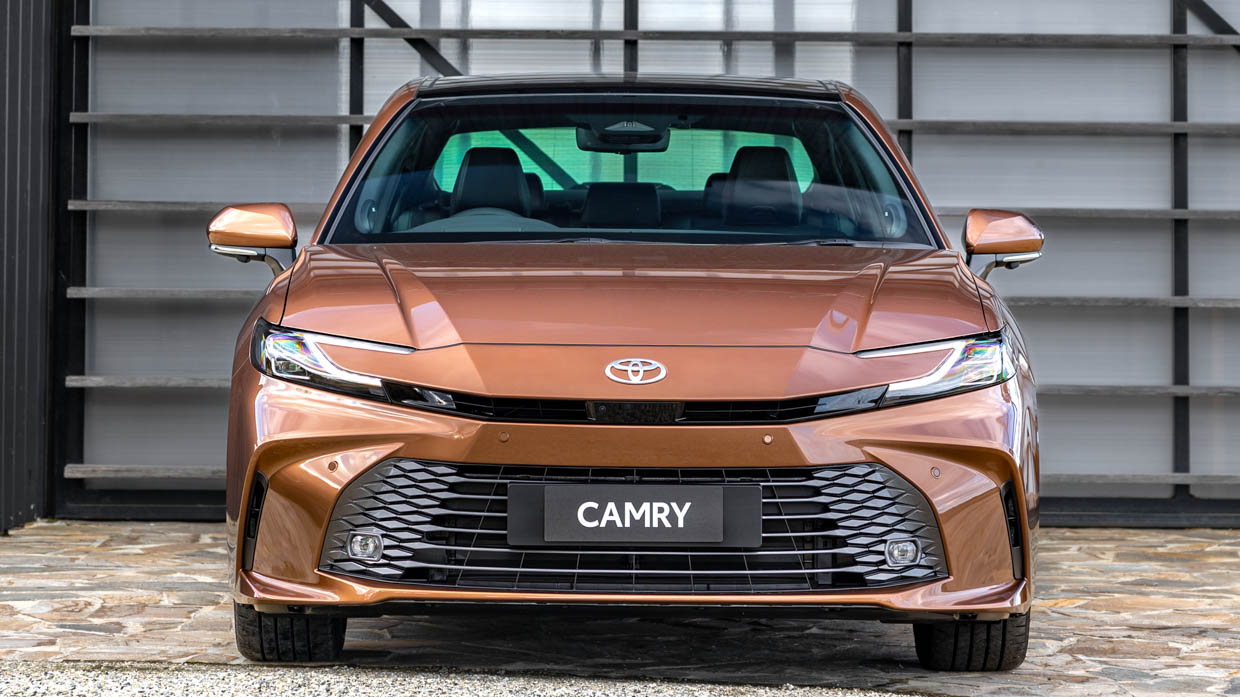
Against a backdrop of a heating planet, regulations that seek to replace the combustion-engined vehicle with an electric one, and even geopolitics, this figure has become newly relevant. Lawmakers around the world want to eliminate L/100km altogether, and head straight to kWh/100km in one uncomfortable leap.
But Toyota argues there’s still plenty of room to reduce fuel consumption in combustion-engined vehicles in the meantime – sneaking an important interim chapter into the story of reaching zero carbon emissions.
The new-generation Camry, which has just arrived in Australia, demonstrates as much. Its 2.5-litre naturally aspirated four-cylinder engine is paired with an electric motor in classic Toyota hybrid fashion to deliver an official combined fuel economy figure of 4.0L/100km. In our own testing, as you’ll read later, we managed to best even that, without trying.
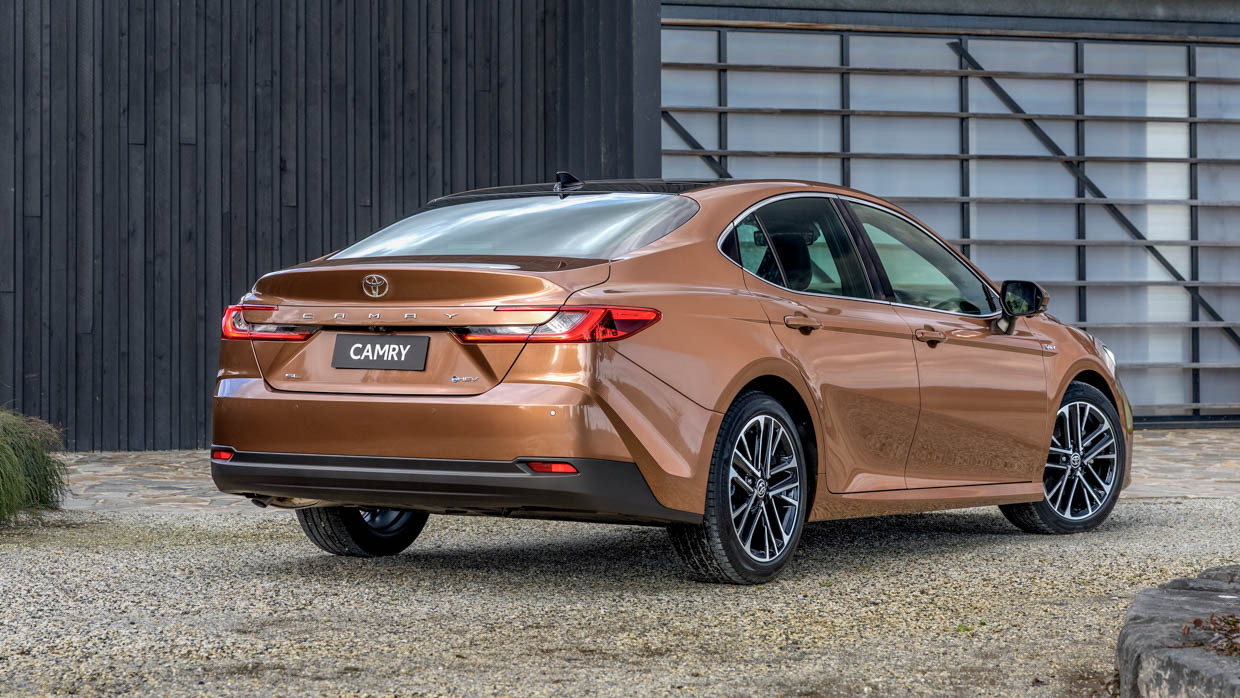
Part of its superb efficiency, quite aside from Toyota’s well-honed hybrid system, is its shape. It’s as if someone has taken an SUV, lowered it and its roofline to reduce the frontal area, subsequently improving aerodynamics – and fuel economy. This new, lower and sleeker type of SUV, one also popularised by the Tesla Model 3, is called a sedan and it might just take off.
Toyota says the ninth-generation Camry is all-new, but it’s effectively a heavy facelift of the previous XV70 Camry and its GA-K platform. While new front and rear bumpers (and mostly new exterior styling) extend its length by 35mm, the width, wheelbase and height remain unchanged.
There’s a new interior, Toyota’s latest active-safety technology, and updated powertrains, with the XV80 Camry range now being hybrid only.
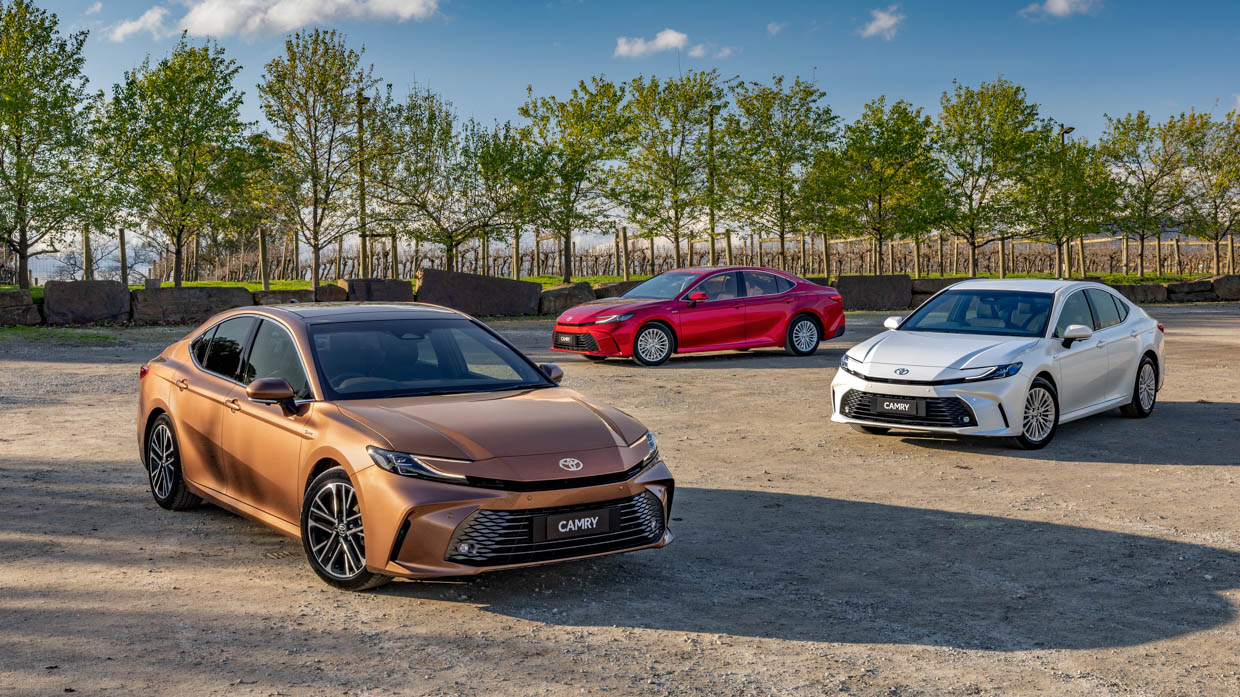
Prices have crept up considerably in just a handful of years. In 2020, the Ascent, Ascent Sport and SL hybrid grades of the previous Camry cost $31,790, $33,790 and $42,790 respectively (before on-road costs).
Now, the base Ascent is almost as expensive as the top-spec SL cost back then, kicking off the range at $39,990. The Ascent Sport, meanwhile, is $42,990 while the SL has jumped to $53,990.
For a segment comprising just 15,134 sales last year, medium sedan rivals under $60,000 are numerous. There’s the new-generation hybrid-only Honda Accord, the concept-car-looking Hyundai Sonata and the ageing Skoda Octavia and Mazda 6.

We’re sure the electric BYD Seal and evergreen Tesla Model 3 have also pinched a few would-be Camry buyers in recent times – though perhaps that may change with this sophisticated new hybrid-only generation.
There are three Camry grades – the base Ascent, mid-spec Ascent Sport and top-spec SL. Today we’re driving the Ascent Sport.
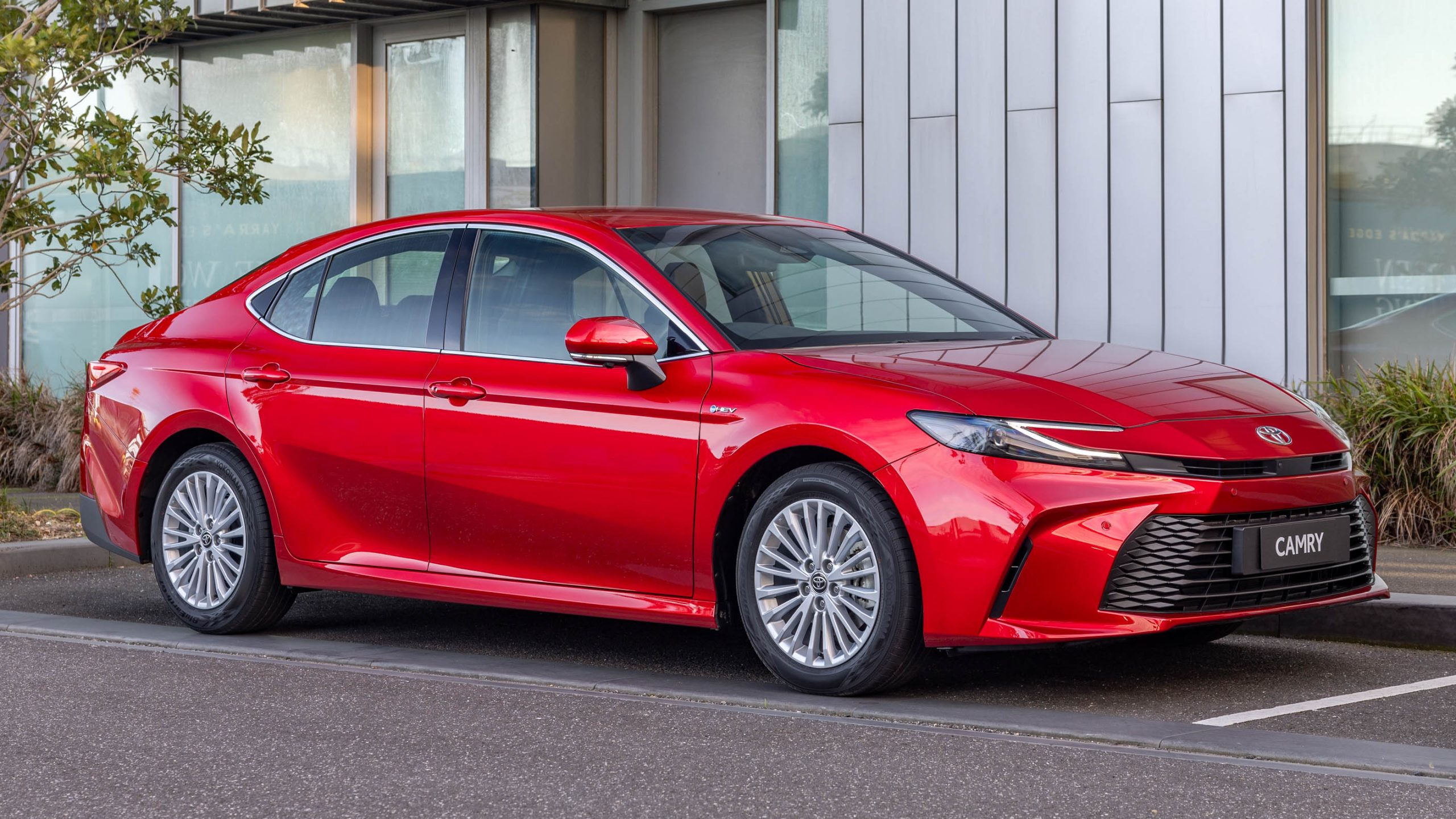
The entry-level Ascent is a real rideshare-market special. Standard equipment highlights for the $39,990 Ascent include:
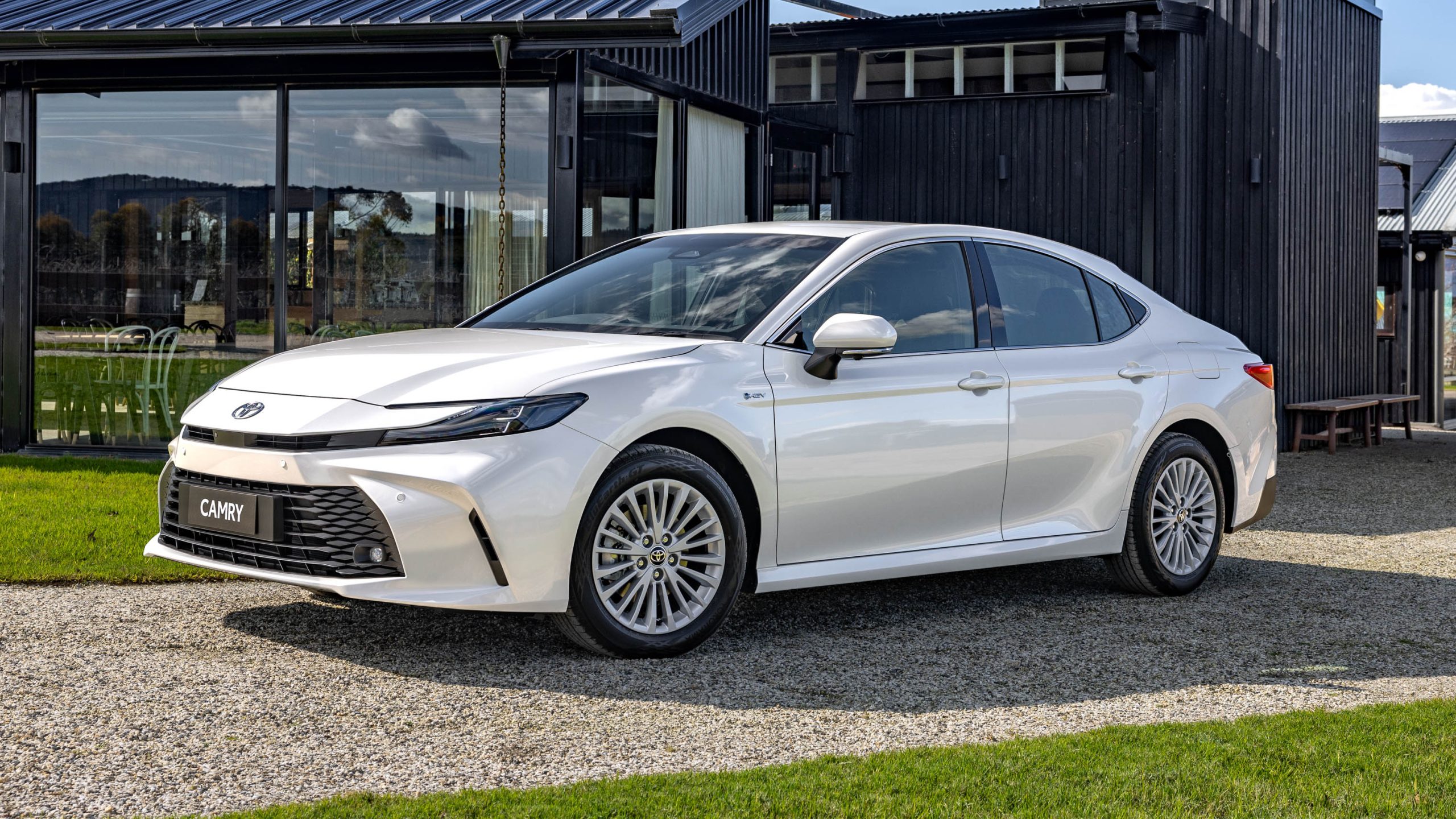
The Ascent Sport includes a few niceties for private and fleet buyers. For an extra $3000, it adds:
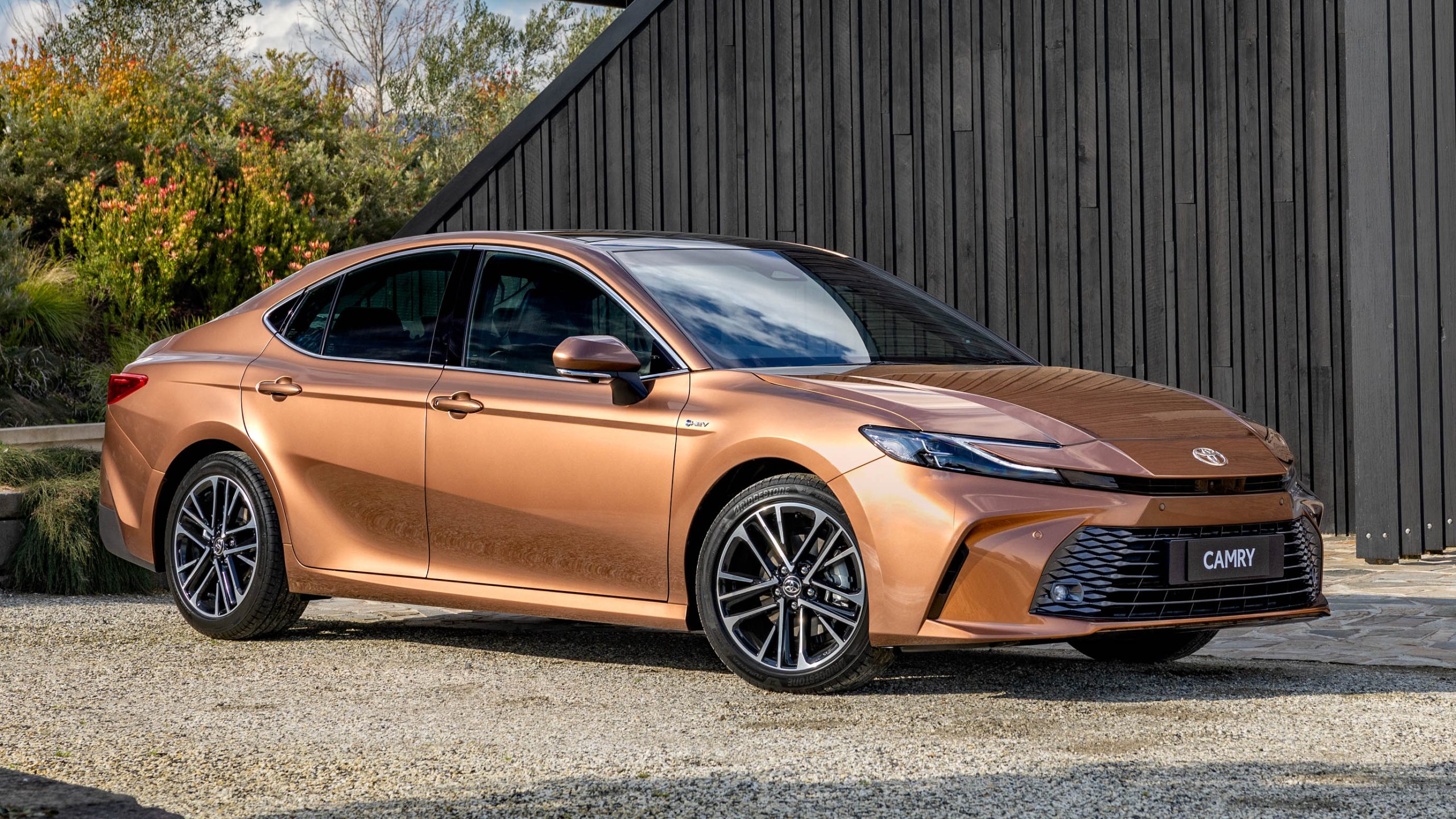
The flagship SL is $11,000 north of the Asecnt Sport, and adds luxuries including:
The new Camry comes with connected services (an in-built SIM card), the first 12 months of which is complimentary. After that, you’ll need a subscription.
From a styling perspective, we think this isn’t a bad-looking car. The ‘hammerhead’ front design language gives it a modern, sleek appearance, and it’s curious that there are no hybrid badges. Toyota calls this, at least by way of its exterior badges, an “HEV” – a hybrid electric vehicle.
The new Toyota Camry is a very nice, very grown-up vehicle to drive, with impressive levels of comfort and refinement.
In the urban environment, it’s reasonably quiet and smooth, while the powertrain transitions from petrol to electric-only (almost) imperceptibly. The passive suspension is quite soft, helping the Camry glide over most bumps very comfortably.
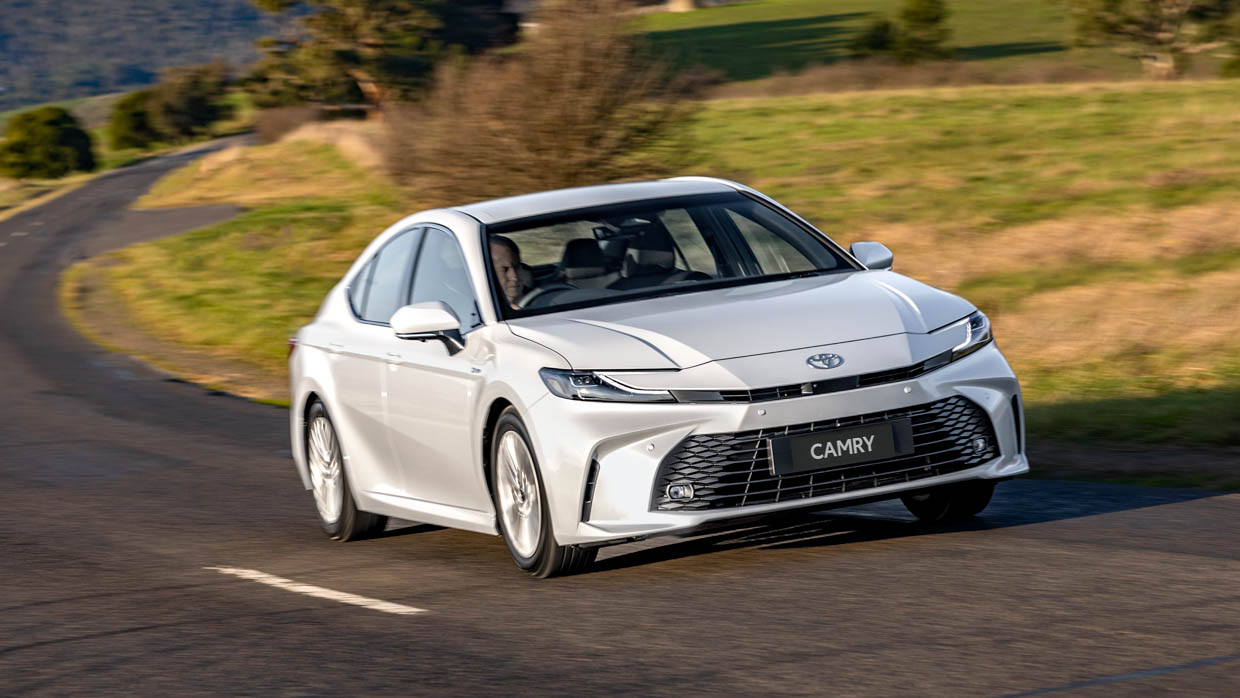
All the controls are light and easy to use, and offer a decent amount of feel. Power has also increased by 10kW compared to the previous hybrid Camry, now 170kW combined from both combustion engine and electric motor.
Put your foot down and the power is solid, if not scintillating. You can feel the 100kW/208Nm electric motor instantly responding to your throttle input with its sudden torque, while the CVT fixes the revs of the four-cylinder engine in the upper ranges, loudly groaning in its power sweet spot.
Toyota claims the new Camry Hybrid can do 0-100km/h in 7.2 seconds. Fast? Not particularly. But easily quick enough for most buyers.
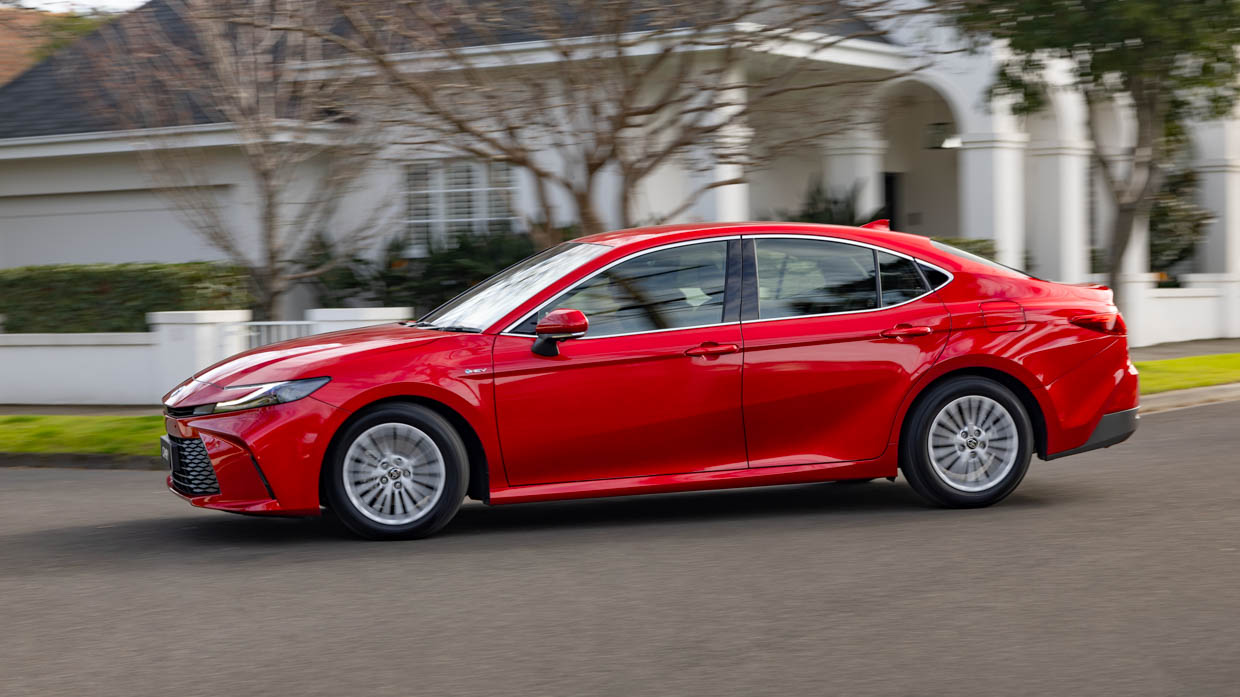
The handling, however, is surprisingly good – fun, even. At 1565kg, this is a relatively light car by modern, mid-size sedan standards, and it shows in the corners, which the Camry relishes. The steering is sharp and direct, while there’s a glimmer of dynamic magic to hint that the Camry comes from the company that makes the GR86, GR Yaris and GR Corolla.
This is no doubt helped by its multi-link independent rear suspension. It’s as if, when developing the Camry, Toyota left itself the opportunity to create a GR version (with a spicier powertrain) – if the mood ever took.
There’s a bit of body roll, but for the most part the Camry feels composed, confident and fluid when driven hard. It’s a pity the powertrain isn’t a better companion. In Sport mode, this efficiency-focused powertrain attempts its best sports-car impression, but the CVT transmission ultimately reduces the engine’s potential, making it merely a thing of function.
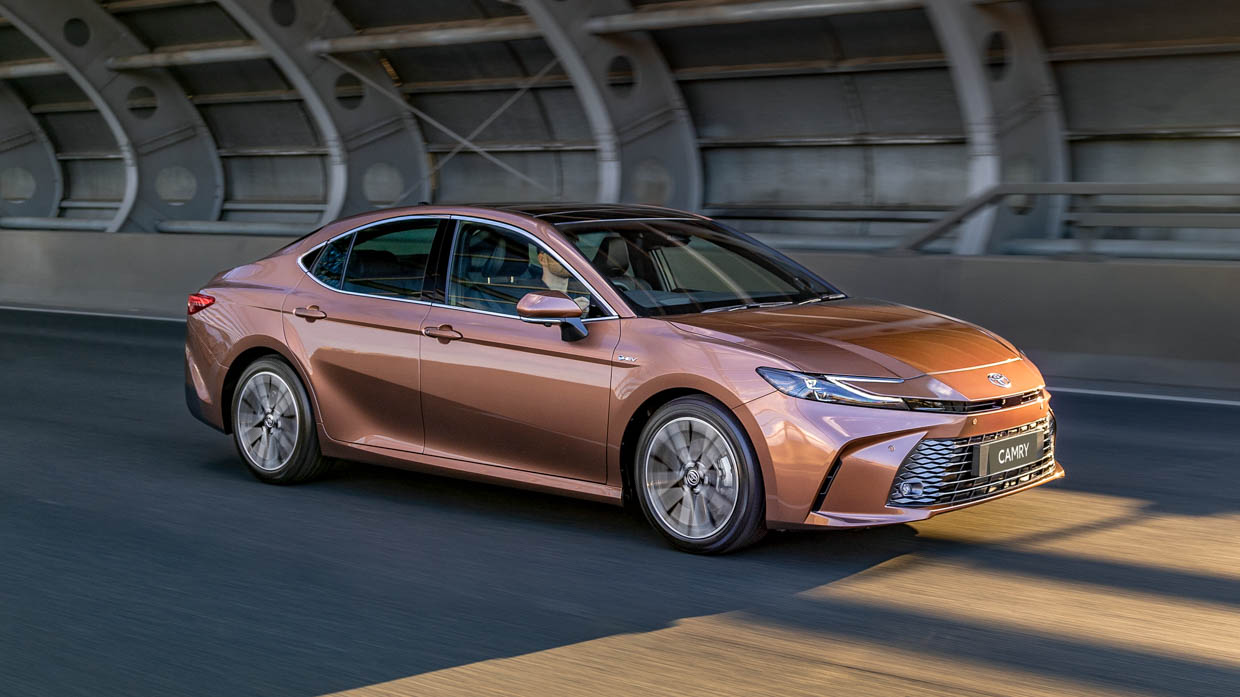
The new Camry is a car that thrills in a different way: adjusting the digital instrument cluster so you can see the average fuel consumption and driving as delicately as possible to get that number down. And it rewards, as our real-world 3.8L/100km figure attests.
While the lithium-ion battery is only 4Ahr in capacity, you can select an “EV Mode” and potter around on light throttle loads, at low speeds, using nothing but energy that would have once been lost as heat in the brakes.
It doesn’t turn the Camry into a plug-in hybrid lite, but you could feasibly complete an entire lap of an unventilated underground carpark emitting no harmful exhaust fumes whatsoever – if that kind of thing appeals.
The Ascent Sport’s cabin is a spacious and comfortable place to be, even if the materials feel pretty ‘fleet’ in this grade with its cloth-upholstered seats. That said, a little bit of leather on the steering wheel and shift-knob goes a long way. It’s good leather, too.
The driving position is classic sedan, seating you reasonably low (especially compared to an SUV) and with your legs outstretched.
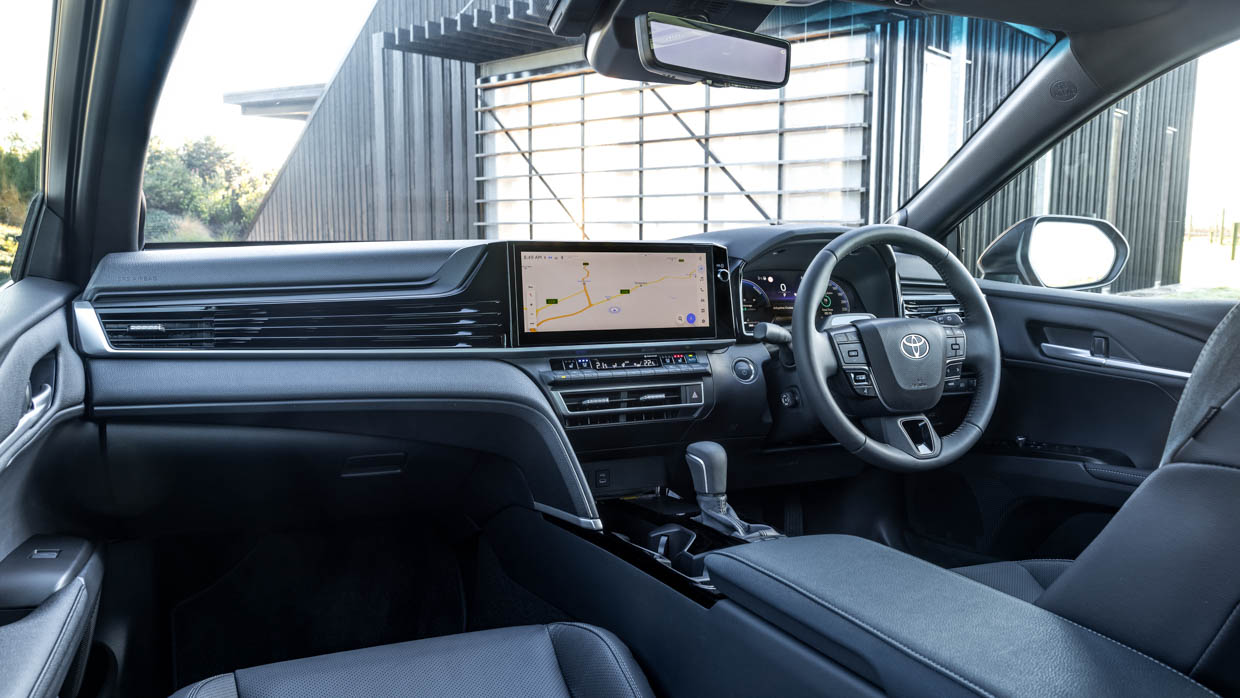
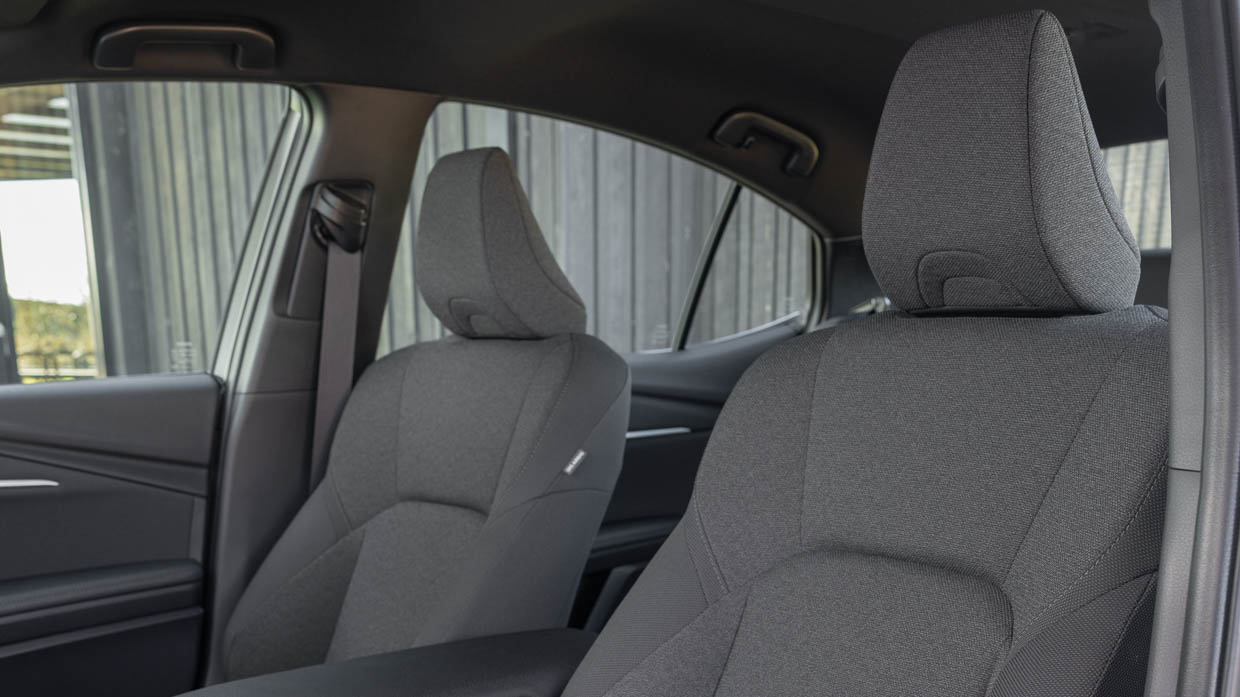
You get a good amount of tech by way of the larger 12.3-inch touchscreen, wireless smartphone mirroring and wireless phone charger. The Apple CarPlay integration fills the centre screen, and we appreciate the retention of hard buttons for the heating and cooling controls. A merciful decision for those who must spend long seat time.
Front seat storage space is pretty good with a large centre console, although the smaller door bottle holders are a bit last decade. It would have been nice to see Toyota resculpt the door bins to fit bigger drink bottles, again given this is an office for many drivers.
For the most part, the back seat feels identical to the old Camry. There’s a good amount of space (as you’d hope) and decent amenity including a centre armrest, dual manual air vents and two USB-C outlets.
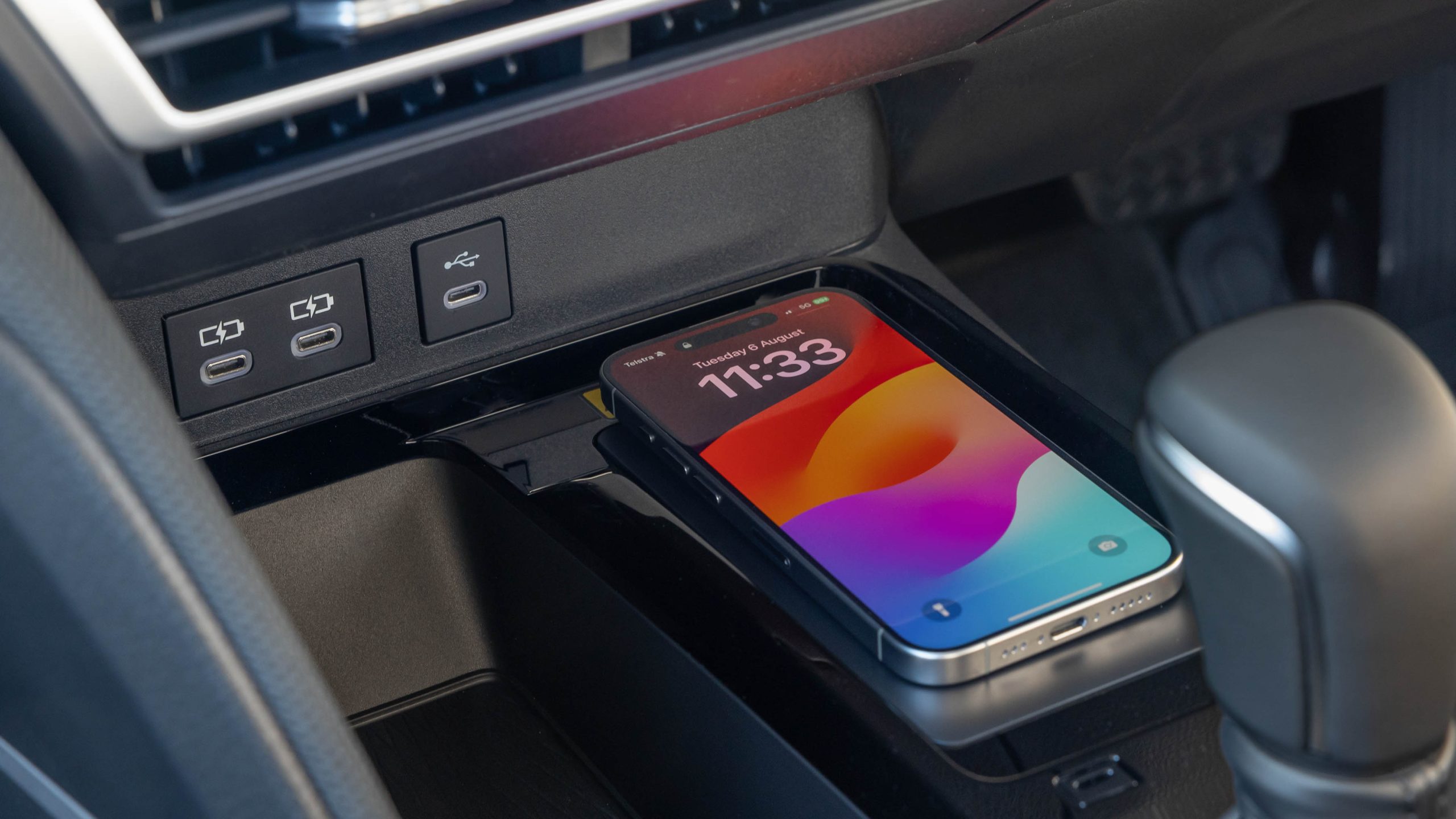
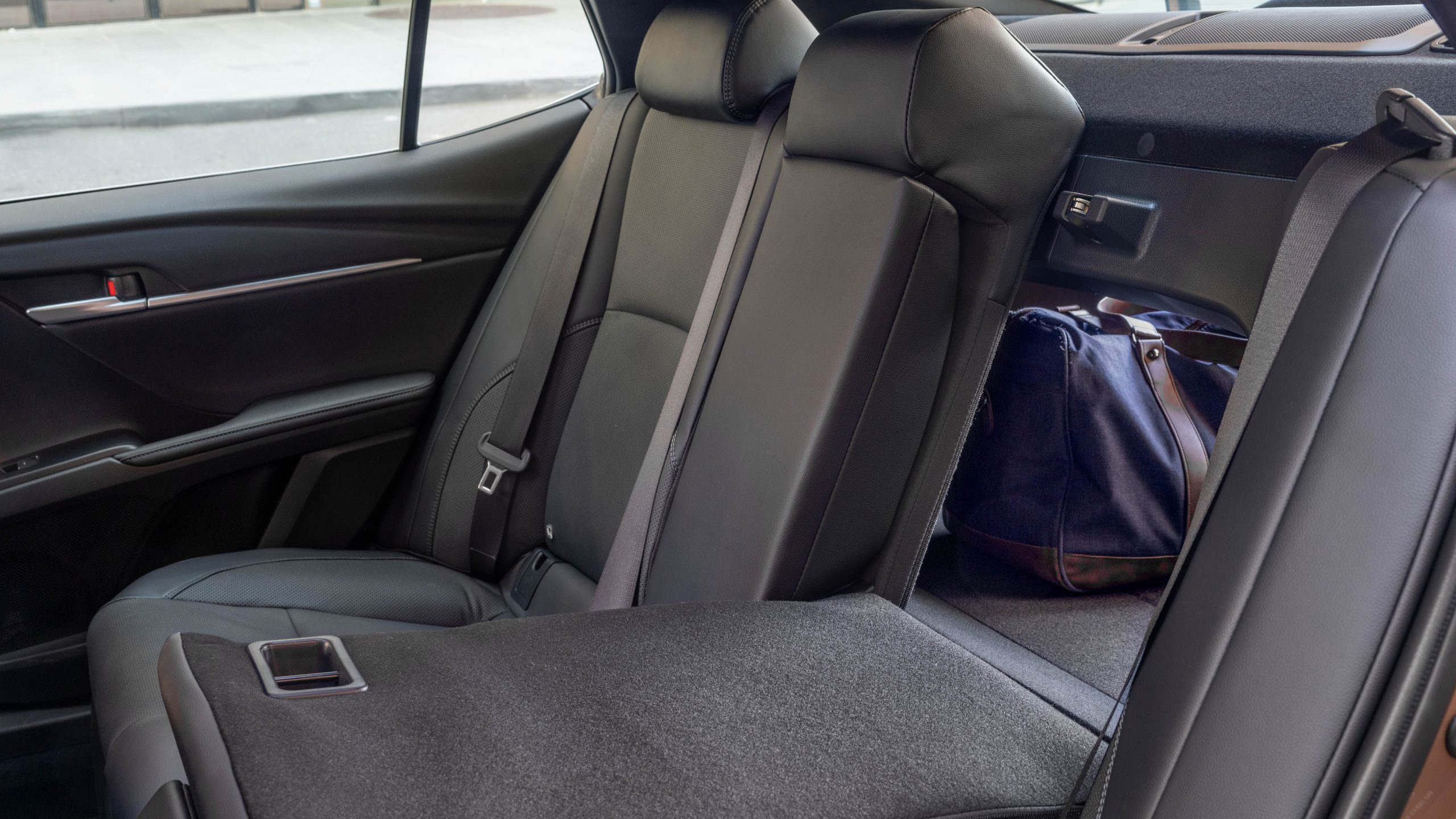
There’s plenty of knee-room but there could be more foot-room for a car that probably accepts more rear passengers in the world than any modern equivalent.
To that point, we would have loved to see some more improvement or innovation for rear-seat passengers, but alas not. Far more people will experience the back seat of the new Camry than the front, after all.
There are two sets of ISOFIX points on the outboard rear seats, and three top-tether anchorages.
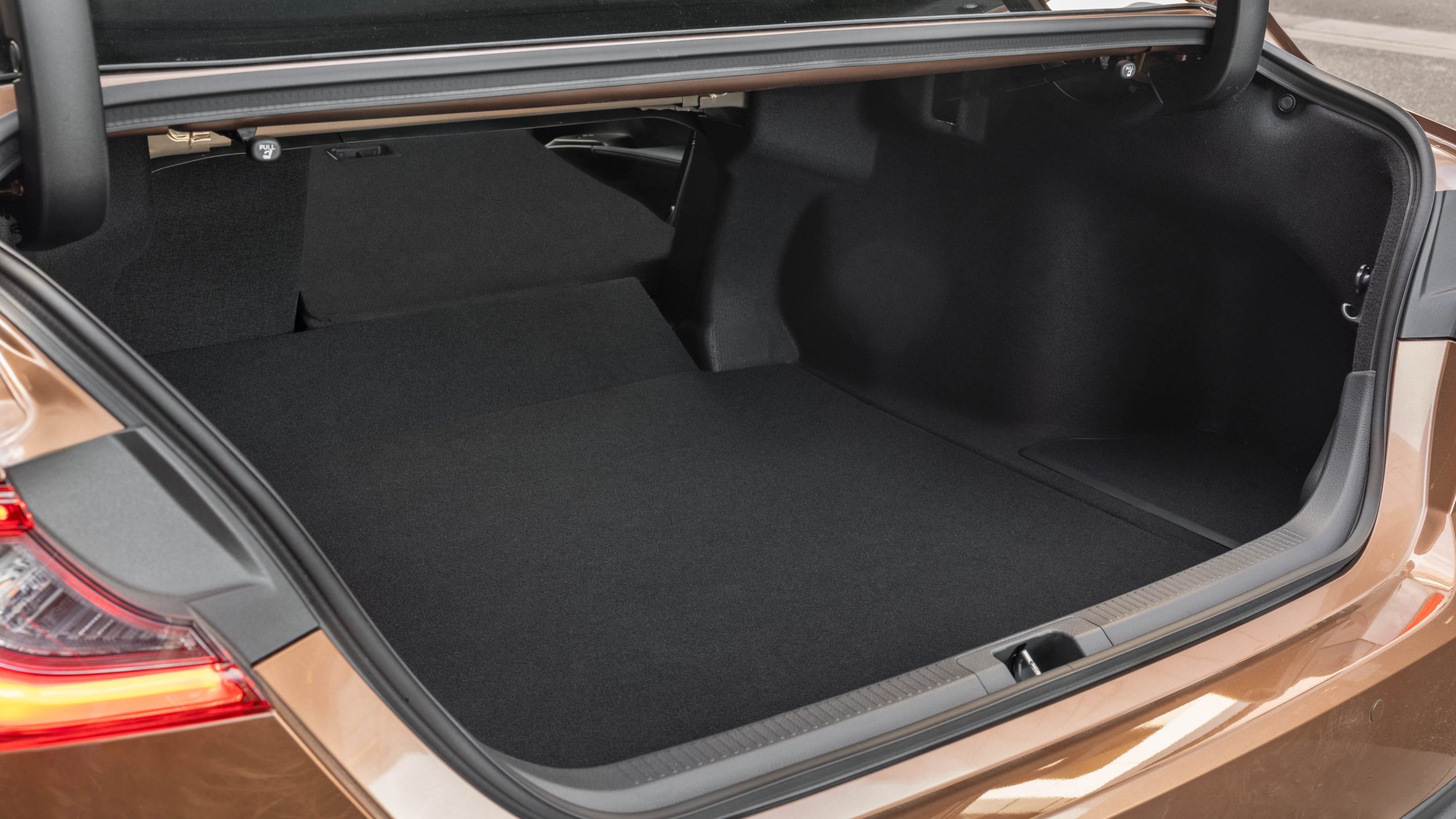
Moving to the boot, and it’s truly impressive for a mid-size sedan. The boot opening itself widens like it’s trying to eat the world’s largest suitcase in one gulp, while its 524-litre volume means it might just fit. There’s a space-saver spare wheel and, pleasingly, two boot-situated levers to fold down the 60/40 split-fold rear seats.
Overall, the Camry Ascent Sport’s interior has a workmanlike vibe, but it feels engineered to meet the basic needs of style – while being able to last for many hundreds of thousands of kilometres. It would be a comfortable place to spend a long time, which is surely music to the ears of most of its eventual drivers.
The new Toyota Camry is very safe – as was recently proven in independent crash-testing by the Australasian New Car Assessment Program (ANCAP).
Its score of 95 percent for Adult Occupant Protection is the highest ANCAP has recorded – which is no small deal. For child occupant protection it scored 87 percent, while vulnerable road user protection was 84 percent, and safety assist was 81 percent.
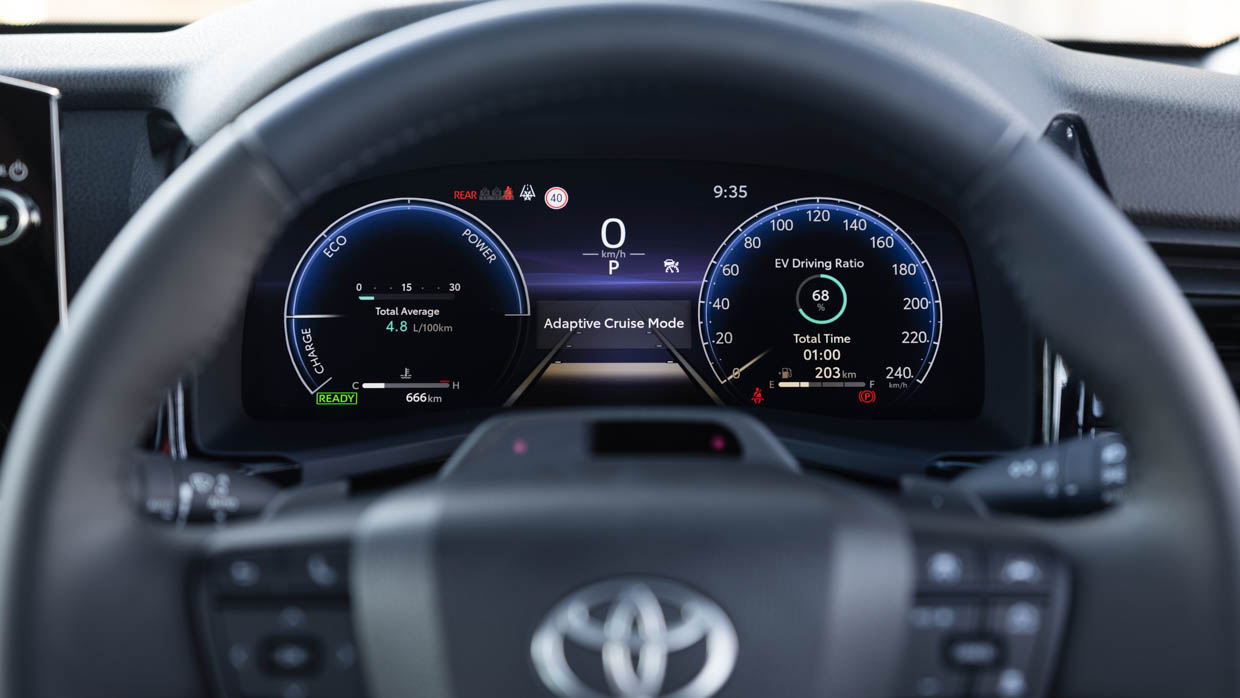
As well as seven airbags including a front-centre airbag, all Camry grades come with Toyota’s latest active-safety technology – dubbed Safety Sense in Toyota-speak – including:
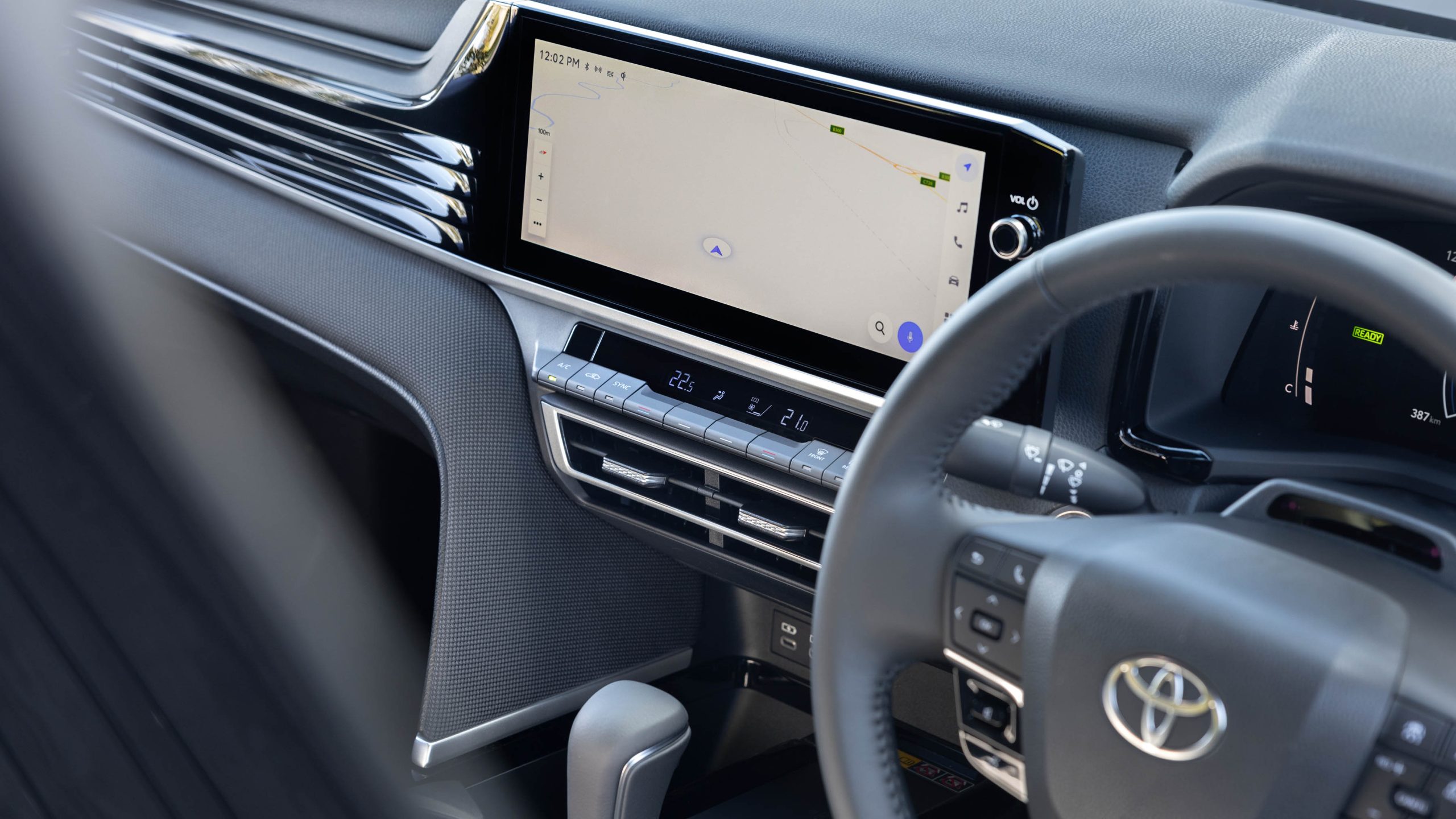
The Camry’s in-built connectivity provides the ability to automatically contact an emergency call centre in the event it detects a collision – for a little extra peace-of-mind. All active safety systems worked well during our testing without being annoying or intrusive.
The Toyota Camry would be a cheap car to own and run.
Of course, its headline act is its fuel economy, and as previously mentioned we recorded a best of 3.8L/100km over mixed suburban and freeway driving, and we weren’t even trying that hard. Something like 3.6L/100km might be possible – or even lower again.
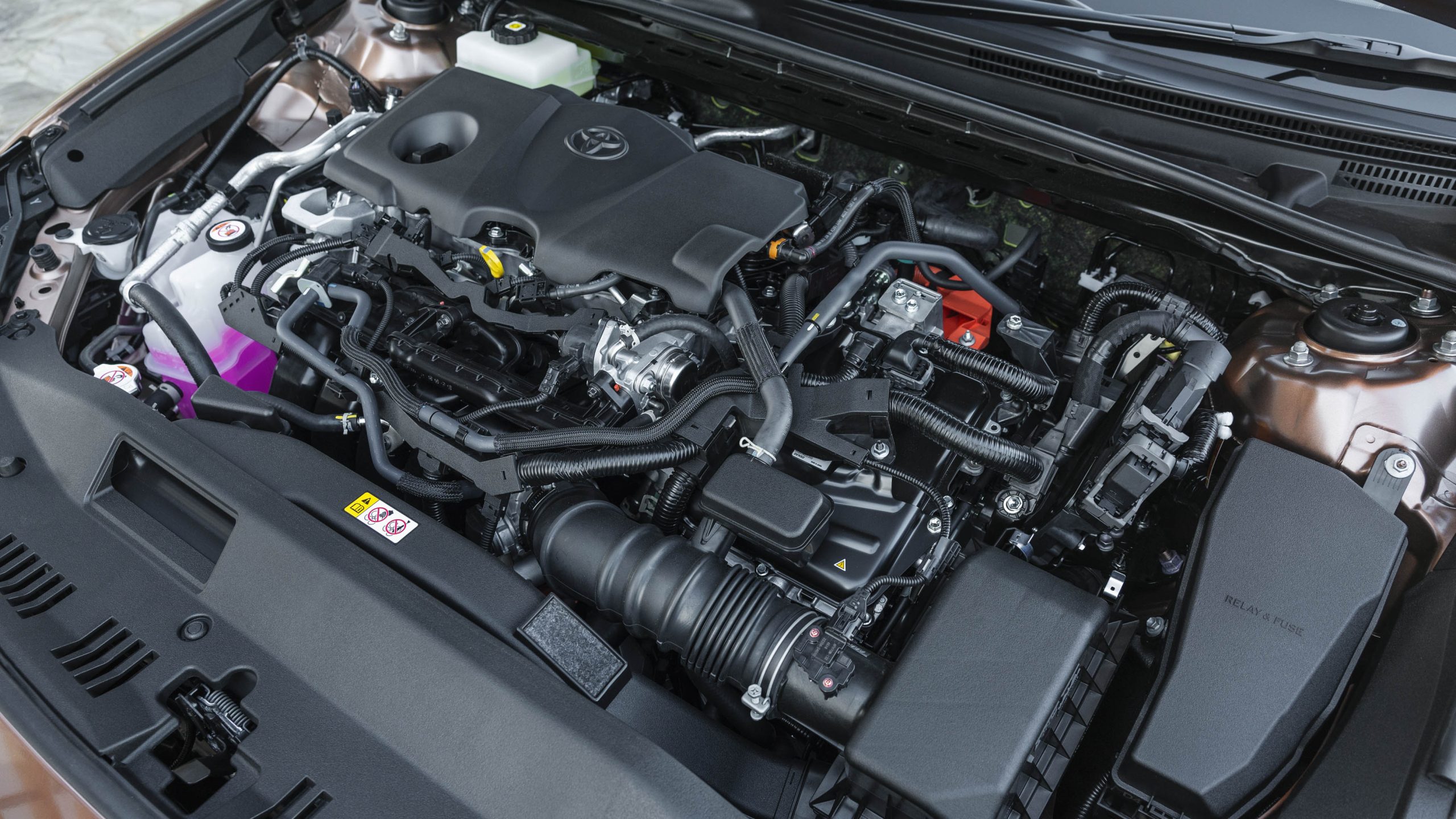
With its 50-litre tank, it’s theoretically possible to extract more than 1300km of range, which is incredible! Unfortunately, to get that fuel economy requires pricier 95RON premium unleaded petrol.
Maintenance is also moderately pricey at $255 per service. Intervals are every 12 months or 15,000km, giving a five-year total servicing cost of $1275, which is enticing.
At least with a Camry in the driveway, you can sleep soundly when it comes to depreciation (now there’s a sentence to get the blood pumping). In an era where depreciation is the biggest cost to owning an electric vehicle, retained value is a proven Camry strength.
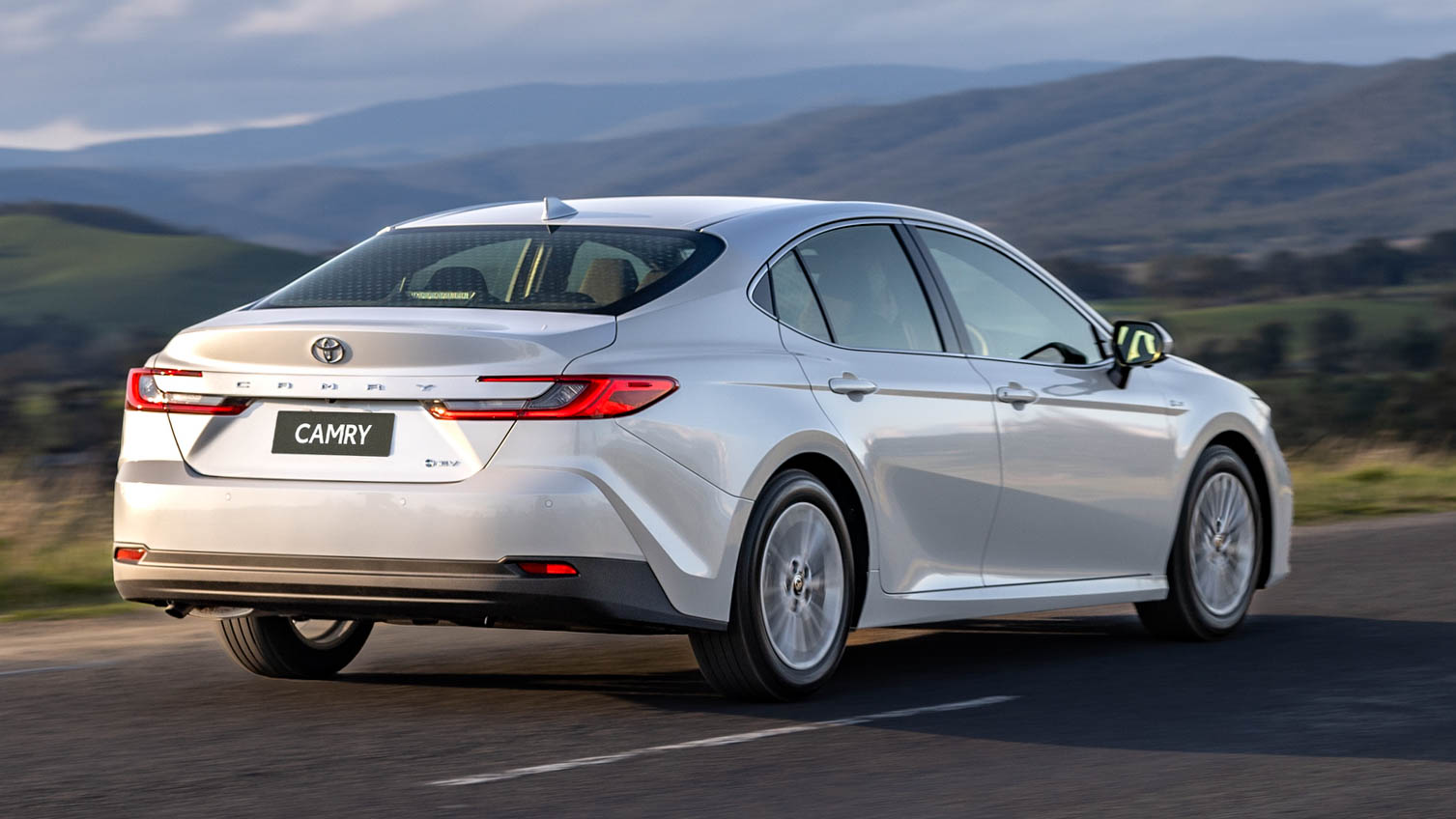
According to AutoGrab, which captures resale data from the biggest online automotive marketplaces in Australia, the Camry ranked 17th for residual value in 2023. The Camry retained an average of 79.1 percent of its value after three years and 45,000km.
The base Ascent hybrid was a star performer, retaining 81.4 percent of its value over the same period and mileage, which matches the best-performing vehicle for retained value in Australia in 2023 according to the survey, the Nissan Leaf.
There are more exciting mid-size sedan options than the new Toyota Camry – we can’t imagine many owners taking their new car around to show their mates – but this stalwart sedan remains one of the most practical vehicles you can buy today. And it just strengthened its grip on that title even further.
Toyota would hate for us to say it, but there’s no getting away from the fact that you might feel like an Uber driver in the front seat of the Camry Ascent Sport. If you’re a private buyer, it’s worth stumping up for the richly equipped Camry SL just to evade this feeling.
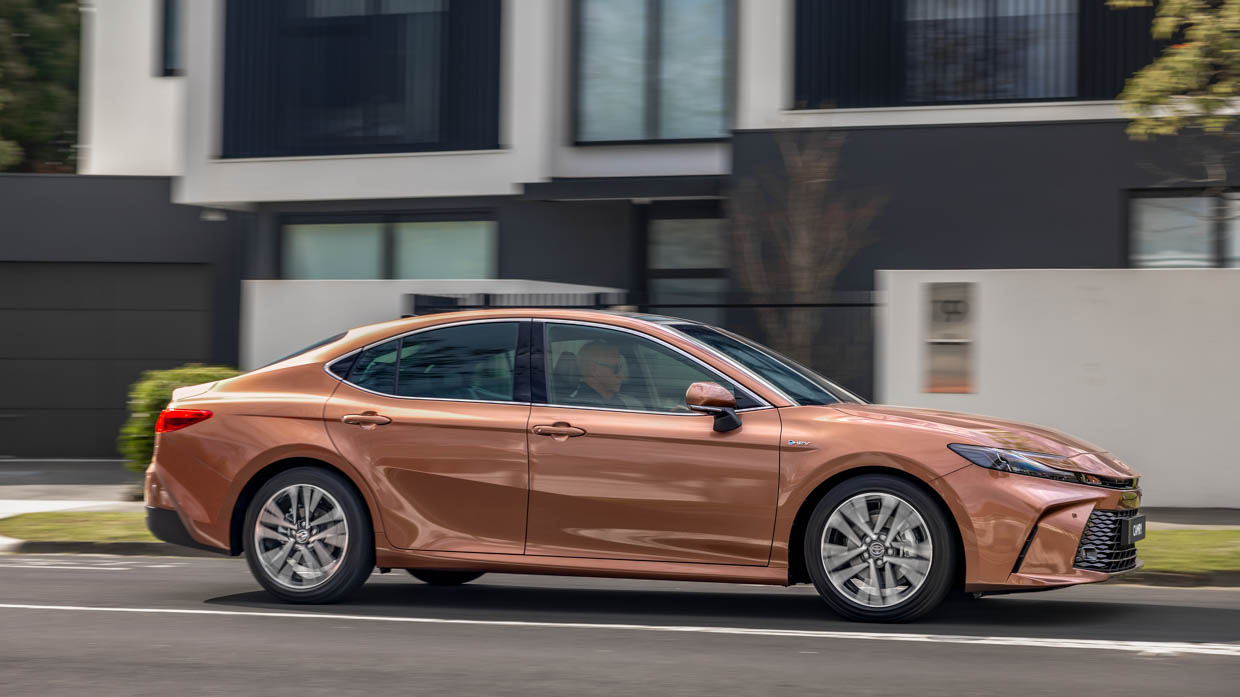
It’s also a pity the price has gone up so much, dramatically eating into any savings yielded by the new Camry’s outstanding fuel efficiency. Toyota should be a champion of the people in the fight against rising living costs. Yet we’re left to assume the cost to create the car itself has risen. At least the new all-hybrid Camry should hold onto its value well.
In the grand scheme of things, it’s surprising the Toyota Camry isn’t more popular. It’s a difficult car to fault – comfortable, easy to drive, spacious and with a huge boot. And the hybrid fuel efficiency is really something, going to show L/100km and the engineering involved really can be as interesting as acceleration times. Or almost, at least.
About Chasing cars
Chasing Cars reviews are 100% independent.
Because we are powered by Budget Direct Insurance, we don’t receive advertising or sales revenue from car manufacturers.
We’re truly independent – giving you Australia’s best car reviews.
The estimate provided does not take into account your personal circumstances but is intended to give a general indication of the cost of insurance, in order to obtain a complete quote, please visit www.budgetdirect.com.au. Estimate includes 15%^ online discount.
^Conditions Apply
Budget Direct Insurance arranged by Auto & General Services Pty Ltd ACN 003 617 909(AGS) AFSL 241 411, for and on behalf of the insurer, Auto & General Insurance Company Limited(ABN 42 111 586 353, AFSL 285 571).Because we don’t know your financial needs, we can’t advise you if this insurance will suit you. You should consider your needs and the Product Disclosure Statement before making a decision to buy insurance. Terms and conditions apply.
Indicative quote based on assumptions including postcode , 40 year old male with no offences, licence suspensions or claims in the last 5 years, a NCD Rating 1 and no younger drivers listed. White car, driven up to 10,000kms a year, unfinanced, with no modifications, factory options and/or non-standard accessories, private use only and garaged at night.
^Online Discounts Terms & Conditions
1. Discounts apply to the premium paid for a new Budget Direct Gold Comprehensive Car Insurance, Third Party Property Only or Third Party Property, Fire & Theft Insurance policy initiated online on or after 29 March 2017. Discounts do not apply to optional Roadside Assistance.
2. Discounts do not apply to any renewal offer of insurance.
3. Discounts only apply to the insurance portion of the premium. Discounts are applied before government charges, taxes, levies and fees, including instalment processing fees (as applicable). The full extent of discounts may therefore be impacted.
4. We reserve the right to change the offer without notice.